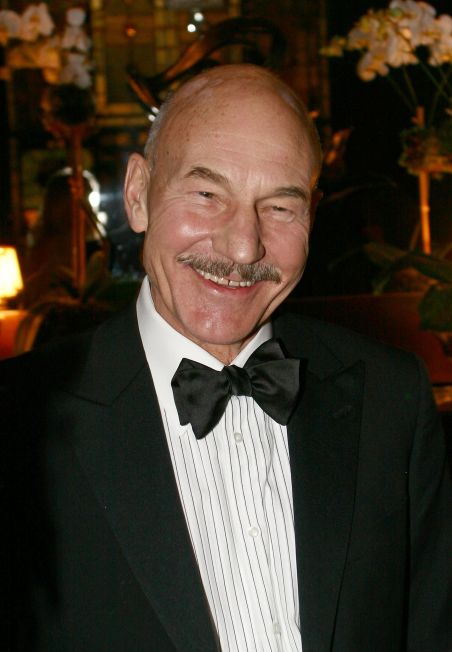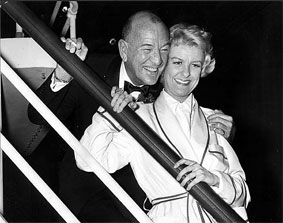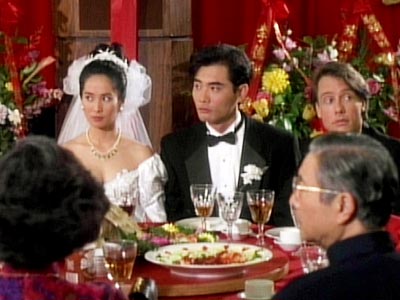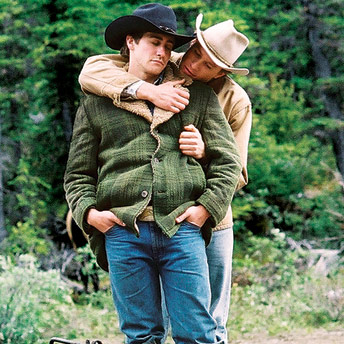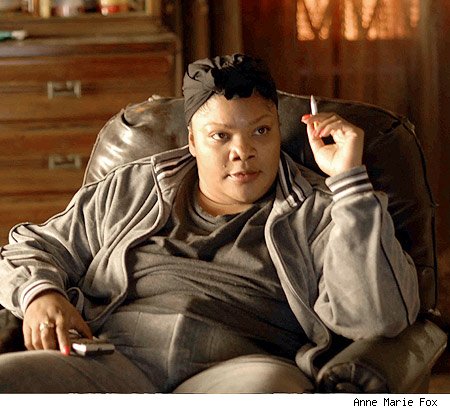
(Anne Marie Fox)
“Mo’Nique has GOT to win the Oscar!” enthused Tina Brown after a screening of Lee Daniels’ PRECIOUS last Friday afternoon, an opinion with which I can only concur. As Mary, the most mesmerizingly abusive mother in film history (forget Gladys Cooper in NOW, VOYAGER, Piper Laurie in CARRIE or even Faye Dunaway in MOMMIE DEAREST), Mo’Nique gives one of those rare performances which seductively hypnotizes even as it totally repels. Forever planted in front of the TV, watching inane game shows, smoking, scarfing down food and hurling obscenities and orders at her beset, obese daughter, the ironically named Precious (Gabourey Sidibe), the actress possesses a terrifying operatic power, with furiously angry arias which, instead of gorgeous high notes, are laced with “muthafuckas” and “goddamns.” The film itself is absorbing and grittily real, even with its cinematic flights into the glamorous fantasies Precious imagines as an escape from her miserable life, but Mo’nique, with her scary, lullingly husky voice, hypes it with an intensity that invests her scenes with a dark, unholy power that surpasses everything else. You find yourself anticipating her every onscreen appearance, even as you dread what she’ll inevitably do in them. (Perhaps the actress’ stand-up appearances in women’s prison in her devastating TV concert I COULD BE YOUR CELLMATE have further informed her uncanny understanding of the darker sides of human experience.)
Daniels is clearly also in thrall to the performance, even giving her one moment of transcendent “glamour,” as she rocks out alone in her living room to Jean Carne’s great, shimmering 1979 song, “Was That All There Was,” as transfixed in the moment, despite her pimples and unshaven armpits, as Precious is in her imaginings of red carpet arrivals or triumphant stage performances. (Daniels is at his flamboyant best during these sequences, which usually occur during Precious’ darkest moments; I’d love to see him try his hand at a musical.) The funniest, most apalling movie scene of the year has got to be when the welfare worker comes to visit, with Mary pulling on a wig and Precious’ retarded baby onto her lap, putting out a cigarette and suddenly assuming a motherly sweetness, a scene which had me gasping at its multi-layered audacity. Mo’Nique also doesn’t stint from the suggestions of the incestuous sex Mary also forces Precious into with herself.
The movie, based on the novel PUSH by Sapphire, is riveting, even with its worthy truckload of “triumph of the female human spirit” qualities which have attracted no less than Oprah as an executive producer. It deals with many of the same issues as THE COLOR PURPLE, the film of which is like a lovely Disneyfied fantasy compared to Daniels’ empathic, street-wise evocation of these forgotten women’s lives. He leavens the grimness of Precious’ story with piquant touches of magic realism, as well as a gallery of other, highly ingratiating females, like the girls in Precious’ Special Ed class, who range from an amusingly officious, thickly accented West Indian to a a louche Puerto Rican mami, all of them in thrall to a comely male nurse (Lenny Kravitz, sexily relaxed), who administers to Precious after she has borne her second baby by her own father; Sherri Shepherd as a savvy school receptionist; Mariah Carey, drabbing herself down as a social worker (with even a hint of upper lip hirsuteness), and lovely Paula Patton who manages to avoid being cloying as Precious’ devotedly supportive teacher, who happens to be lesbian. Daniels also has a vital gay man’s prescient attention to telling details, like the choice of that Jean Carne song and the poster of Ntozake Shange’s landmark FOR COLORED GIRLS hanging in Patton’s home.
In her all-demanding screen debut, Sidibe is never less than convincing and admirably never stoops to easy heart string-tugging. She bears her many woes with an awesome stoicism, making her eventual emotional breakdown all the more affecting. A more trained actresss in the role might not have worked, and Sidibe’s naturalness is a considerable asset, with her somewhat limited expressiveness adding overall credibility. Yet even her big final scene is trumped by Mo’Nique’s ensuing confessional, with her fury and sadness elementally mounting to Greek tragic proportions. I only wish Daniels had kept his busy camera (mostly effective throughout) at rest during this scene. He pans down to her hands nervously fidgeting with her purse and it’s an unnecessary distraction when all we want tois see her fraught face. There’s simply no following this moment, and Daniels wisely doesn’t prolong things, giving Precious a mercifully pithy happy ending.
BTW, before the film, the Tribeca Screening Room was absolute celebrity sighting central that afternoon, which, besides Tina Brown, had a low wattage start with the appearance of Joy Behar (with partner, Steve Janowitz) who, when told it might be as much as an hour wait for the delayed screening to start (wrong!), said, “I’m not waitin’ for an hour. Let’s go have lunch!” (She returned and saw her THE VIEW co-star, Shepherd do her onscreen thing.) Shortly thereafter, Josh Brolin left the building, hopping into a chauffeured SUV, and then Harvey Weinstein and e’er-present entourage came off the elevator.
OTHER FILMS:

Carey Mulligan in AN EDUCATION, and her American twin sister

Katie Holmes
AN EDUCATION: I can’t understand the critical praise for this. Are people that starved for another period coming-of-age story with pretensions to intelligence and feminism?
The central role of pretentious schoolgirl Jenny (Carey Mulligan), with her superior air and habit of employing French phraseology is the kind of part that demands a special kind of actress to carry off. The young Katharine Hepburn, with her unique charm – equal parts joyously innate innocence and resolute eccentricity – in MORNING GLORY, STAGE DOOR, THE PHILADELPHIA STORY and, especially, ALICE ADAMS, was able to make her obnoxious, wrong-about-everything heroines enchanting, but Mulligan (a dead ringer, with her elfin baby face and long, slim body, for Katie Holmes) is far too knowing and actress-y to be either convincing or appealing. Her trained dramatic voice, with its calculatedly husky notes, is disconcertingly mature and she seems too brashly convinced of her own irresistibility. I couldn’t warm to her at all, and when she cruelly dismissed Graham (Matthew Beard), the sweetly callow, perfectly presentable fellow student with an aching crush on her, all possible sympathy for her vanished.
This enterprise is marred by overall miscasting. Jenny is taken out of her suburban existence by a suave, shady older Jewish man, David. He is played by the American Peter Sarsgaard, with his exquisite Nordic features, oh-so careful Brit accent and diffident, eternally squishy presence: they have zero sexual chemistry. David is harboring a secret or two; Sarsgaard always seems to be, as well, but with him it often comes off, for some reason, as closet homosexuality. As Jenny’s father, we have Alfred Molina, so dark and ethnic-looking, bt also essentially a sweetheart, railing against David’s Jewishness with empty bluster, and, overall, none-too-believable as a frighteningly domineering Dad. (He’s almost as strenuously unsympathetic and misguided as he was as Kenneth Halliwell, Joe Orton’s lover/killer in PRICK UP YOUR EARS.) Cara Seymour as Jenny’s mother is merely a wan dishrag, tiresomely subservient and emblematic of failed dreams. Danish director Lone Scherfig’s touch seems too alien to truly capture London in the early ’60s (there’s nary a hint of The Beatles or any counter-cultural clues preceding them, and she’s no great shakes when it comes to romance, either. When Jenny and David go to Paris to finally consummate their relationship, Scherfig goes all cliche: couples dancing along the Seine, having champagne by the Seine, strolling along the Seine, but their sex is merely suggested by a post-coital scene in which Jenny muses along the lines of “Is That All There Is?” as if Scherfig were still operating under the Hays Code. We’re thankfully spared a pair of bodies entwining to some pop ditty in careful soft focus, but Scherfig surely missed out on some sensual and/or comic opportunities here.
The charismatic glamour of David’s world (and how Sarsgaard lacks those atrributes!) is raffishly represented by Rosamund Pike, who fitfully enlivens things as an elegantly dumb blonde moll and Dominic Cooper as her man. Cooper was irresistible onstage in THE ALTAR BOYS, as a prep school studmuffin, causing him to be immediately thrown into high profile films, but his teeny-faced features don’t photograph well and, apart from a flashy, shallow bravado, he never brings much to the party.

Emma Thompson needs to play Mags Thatcher
It’s left to a pair of accomplished Brit ladies to provide some spine here, and Emma Thompson and Olivia Williams (channeling two Maggies, Thatcher and Smith in THE PRIME OF MISS JEAN BRODIE, respectively) as dragon-ish school doyennes, effectively make the most of their moments – I was far more interested in their lives than Jenny’s – but it’s not enough to make this misguided, woefully tone-deaf effort worth your while.promising

Olivia Williams
WHERE THE WILD THINGS ARE is, most assuredly, where a good film is not. It starts off well enough, with Spike Jonze’s frenetically loose direction, music savvy and attention to detail promising an edgy, fun time for the entire family. With intelligent, appealing actors like Catherine Keener playing the harried mother of the kid hero, Max (Max Records), and Mark Rufalo as her boyfriend, you feel that these are folk you don’t mind spending time with. Records is admirably natural: spunky, energetic and very touching, vividly capturing that childhood angst we all recall when he is left alone by his older sister and her uncaring friends, weeping over his destroyed igloo.
But then, Max has to “fall through the looking glass,” and the film becomes a noisy, droning bore, populated by author Maurice Sendak’s off-putting shaggy beasts. (I must confess: I am not a fan.) With voices provided by James Gandolfini, Catherine O’Hara, Forest Whitaker, Chris Cooper, Lauren Amrbose and Paul Dano, they depressingly sound like sitcom suburbanites, wrily wisecracking and sniping at each other, and entirely unfunny. Despite the ear-shattering crashes and mid-air tumbles, I could barely keep my eyes open from the general mindlessness, which, while hipper-than-thou, proved monotonous and utterly uninvolving.

Max Records, interminably running with the beasts of WHERE THE WILD THINGS ARE
COPYRIGHT:davidnoh2009









